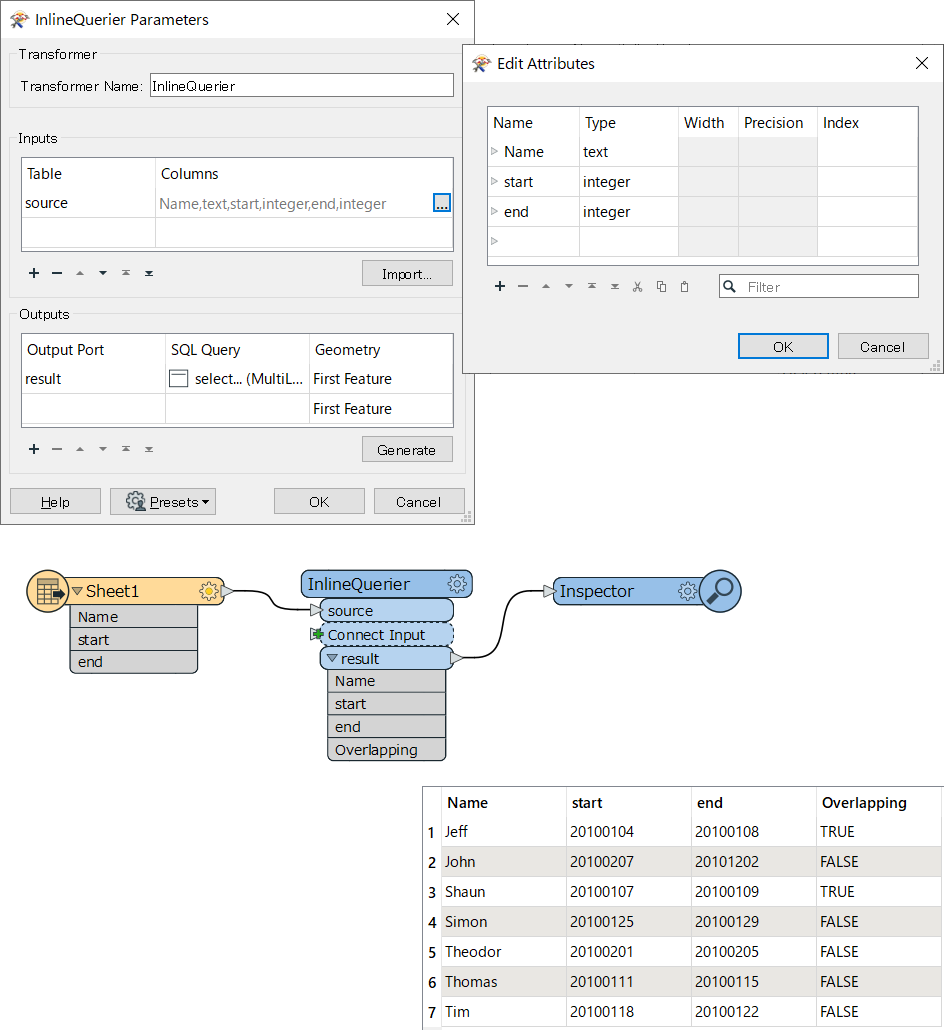Hi all,
I have a data set with a start_date column and an end_date column. What I need to do is determine which date ranges overlap, similar to this:
https://www.get-digital-help.com/find-overlapping-date-ranges-in-excel/" alt="http://https://www.get-digital-help.com/find-overlapping-date-ranges-in-excel/" target="_blank">https://www.get-digital-help.com/find-overlapping-date-ranges-in-excel/
I am fairly new to FME so I apologise in advance!






